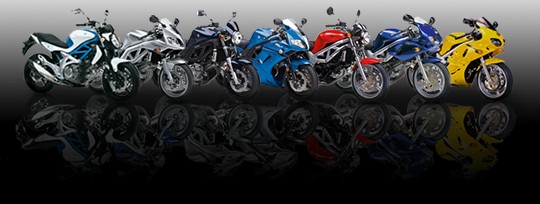 |
 |
|
|
#161 | ||
|
Member
Mega Poster
Join Date: Apr 2005
Location: Sunny Swindon
Posts: 3,579
|
Quote:
Quote:
I can't see how I would have damaged it removing it, but I'm ruling nothing out. All I can think by way of explanation is the main bearing failed so the whole crank has been moving about allowing the impact and damage that we can see. Hopefully more will be revealed once I get the cases separated. |
||
|
|

|
|
|
#162 |
|
Noisy Git
Mega Poster
Join Date: Apr 2007
Location: Halifax/Leeds
Posts: 26,645
|
If that is the case you should be able to feel movement now.
The failure I would expect is if you slip with hammer while persuading the rotor off and chip a magnet, the chip becomes a crack and the loose bit of magnet gets caught up in the stator and does the damage.
__________________
Currently Ex Biker
Now rebuilding a 63' fishing trawler as a dive boat |
|
|

|
|
|
#163 |
|
Guest
Posts: n/a
|
Steel Crankshaft Hardening
Recently, we have received quite a few questions regarding crankshaft journal hardening processes and concerns about machining steel crankshafts that have been hardened. Since a solid explanation will take longer then a paragraph, we have left this answer out of our frequently asked questions page so that we could devote more time to a detailed answer. There are three common types of hardening processes used on steel crankshafts, and they are induction hardening, tuftriding, and nitriding. Below I will explain these hardening processes in more detail. Most stock OEM steel crankshafts have been induction hardened. This is a low cost process in which the surface is heated by a high frequency alternating magnetic field that generates heat in the crank's surface quickly before being quenched. The depth of this hardening process is around .060 - .080. Because of uneven heating and cooling, this crankshaft hardening process creates stress within the crankshaft. While it is an ideal hardening process for stock applications, it is less then favorable for high performance racing applications. Tuftriding was a process used by some OEM's on special high-performance crankshafts, primarily to avoid the stresses imposed by induction hardening. In Tuftriding, the crankshaft is immersed in hot cyanide compounds, creating a tough, resistant surface that improves fatigue resistance. The hard layer in a Tuftrided crank is usually very shallow, only penetrating around .005. One drawback of Tuftriding is the potential for warpage of the crank. Nitriding is a chemical hardening process in which the part is heated in a furnace, the oxygen is vacuumed out, and nitrogen is introduced which penetrates the entire surface. The depth of hardness is dependent upon the time the crankshaft is exposed to the gas. Typically, a nitrided crankshaft will have a hardness depth of about .010 - .030. Nitriding is a low heat process compared to Tuftriding, but it shares the advantage of avoiding the introduction of localized stress zones as in induction hardening. In most cases, a stock OEM steel forged crankshaft can be welded and/or ground then installed without concern. The induction hardening process has a significant depth, and on non welded journals will remain after being ground. Tuftrided crankshafts can be welded and ground without concern. However, the shallow depth of the hardness would be lost after the grind. Therefore, it is recommended to have the crankshaft hardened again. Nitrided crankshafts can easily be welded and ground without concern. A .010 undersize grind will cause some of the benefits of nitriding to be lost. At .030+ undersize, nearly all of the nitriding benefits are lost. Therefore, it is recommended to have the crankshaft hardened again after grinding. It is important to discuss crankshaft hardening with the machinist which will be grinding your crankshaft prior to the weld and/or grind. These hardening processes can add to the size of the journals, so the crankshaft needs to be finish ground in such a way that allows for the expansion caused by hardening. I have personally ground new aftermarket crankshafts that were shipped out of tolerance. Trust me, as a machinist it is time consuming to setup and grind off .001 of an inch. So please let your local machinist know if you plan to have the crankshaft hardened! There are some automotive machine shops that will not weld a steel crankshaft because it has been hardened. As a machinist, I have never turned away a crankshaft weld because of hardening. If you note my explanation of the hardening processes above, hardening is generally restricted to the surface. To weld a tuftrided or nitrided crankshaft, the journal or thrust needs to be underground first to remove this surface hardening. Then the weld can be applied. In cases where induction hardened crankshafts have been severely damaged, normally pre-grinding the crankshaft for a weld removes this hardening. What about cast iron crankshafts? Do they need to be hardened? The answer is no. During the machining process, cast iron crankshafts become work hardened. If a more durable crankshaft is desirable for your application, it would be a good idea to look into purchasing an aftermarket steel crankshaft. |

|
|
|
#164 | |
|
Member
Mega Poster
Join Date: Apr 2005
Location: Sunny Swindon
Posts: 3,579
|
Quote:
Surprisingly a hammer was not used to remove the alternator. I opted for the spanner, breaker bar, and swearing method. An interesting read. Do you know what type of hardening the SV crank is subjected to as standard? |
|
|
|

|
|
|
#165 |
|
Guest
Posts: n/a
|
|

|
|
|
#166 |
|
Guest
Posts: n/a
|
How's the er6 coming alone mate?
|

|
|
|
#167 |
|
Member
Mega Poster
Join Date: Apr 2005
Location: Sunny Swindon
Posts: 3,579
|
Thats my day to day bike now. Flew through the MOT with a bit of work and then the exhaust fell of the next day. Bit of a pogo stick so once the SH2 is up and running again it will be time to free up space in the garage. Chances are I'll be using it for a while more then...
|
|
|

|
|
|
#168 |
|
Large Member
Mega Poster
Join Date: Jan 2006
Location: Minsterworth, Gloucester
Posts: 2,353
|
Quite a while I'd say... Let's sex the ER6 up, Ducati forks and GSX swingarm? I know a fella that can blast them for you (well soon anyway)
; )
__________________
How to amuze an idiot: Look right-> <-Look Left |
|
|

|
|
|
#169 |
|
Member
Join Date: Mar 2007
Location: Basildon, Essex
Posts: 785
|
I read the thread and even thought how brilliant when you fired it up in the video. Then a few posts later!
|
|
|

|
|
|
#170 |
|
Large Member
Mega Poster
Join Date: Jan 2006
Location: Minsterworth, Gloucester
Posts: 2,353
|
It's annoying when you think he got some mileage out of it, you would think that if you've cocked something up it would show up quite soon.
__________________
How to amuze an idiot: Look right-> <-Look Left |
|
|

|
 |
|
|
 Similar Threads
Similar Threads
|
||||
| Thread | Thread Starter | Forum | Replies | Last Post |
| Oban and beyond (Image heavy) | DarrenSV650S | Photos | 3 | 12-06-09 08:53 PM |
| my new baby *image heavy* | Amplimator | Photos | 17 | 11-05-09 10:19 PM |
| Been out for my best ride yet (image heavy) | Magnum | Photos | 26 | 11-04-09 12:08 PM |
| Colchester Zoo. Very image heavy! | Jester666 | Photos | 5 | 11-08-08 07:48 AM |
| 70s bike day at the Ace (Image heavy) | empty | Photos | 6 | 23-07-07 03:33 PM |